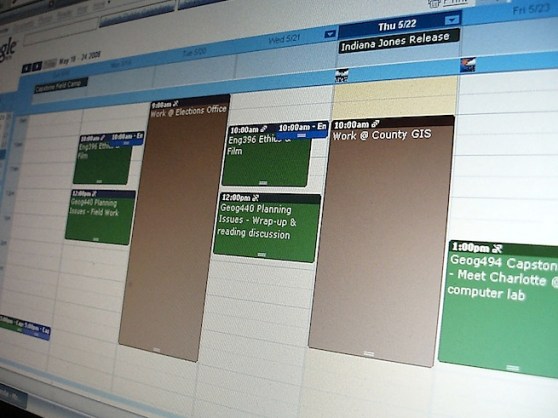Sometimes very small changes can make a big difference. That’s the case with the one change I’d love for Google to make to Google Calendar.
Over the years, Google Calendar has become my default calendaring tool. I use it on the Web and have the calendar on my Android phone. I set up my iPhone with Google as an Exchange server, so I also get Google’s calendar there.
But every time I add a new event, I am annoyed that the “Where” field doesn’t do a type-ahead drop-down with suggestions from Google’s extensive places database. In the absence of that feature, I usually do one of two things: I open Google Maps in a separate window, look up the place and then copy the address into the Where field. Or, I get lazy, and type in a name or some approximation of the place name. In that case, the recipient has to do the work of looking it up. Sometimes this imprecision results in confusion because there may be multiple venues nearby. (Who hasn’t showed up at the Starbucks across the street from the one you intended?)
If Google were to do auto-completion in the Where field, as it does when you search Google Maps, you would more easily be able to specify a precise location. There would be no confusion.
From a technology standpoint, it’s easily doable. And I bet it would be used much more frequently than the “Add a Google+ hangout” link below it.
The simple change would have an immediate benefit in terms of user experience. In addition to saving time on data entry and eliminating potential confusion, it would make navigation easier. When I’m headed off to a meeting, I’d have a GPS-ready destination already attached to my calendar entry. With Google’s new Now feature in the latest, “Jelly Bean” version of Android, my phone could automatically alert me when it’s time to leave for my meeting, based on traffic conditions.
Although Google Calendar usage is small compared with other Google products, it still reaches 8.6 million visitors a month, according to comScore. Those users are loyal, visiting the site 61 million times in September.
This small change could lead to a lot of other benefits that could be built in over time, both for consumers and for Google:
- Google could suggest venues based on the number of people invited. I’m having dinner with 6 people; here are a few places that can accommodate that.
- When I receive an invitation, Google could calculate whether it’s reachable based on the distance from my previous appointment. If I have a 2 p.m. meeting in Palo Alto, I can’t make a 3 p.m. in San Francisco.
- Google could validate locations against the times that a place is open. I’ve had people schedule meetings with me at restaurants that turned out to be closed on Sundays. With the data about venues in Google Places, Google could reduce this kind of error. If the user goes ahead and uses the location anyway, it could be an indication to Google that the business’s hours have changed.
- Likewise, if a place recently went out of business, Google could warn me ahead of time, when I’m trying to schedule an appointment there.
- Google could collect newly opened venues. If I enter a place that isn’t in the database, it could prompt me to add it. (There needs to be a provision for private venues, such as my home.)
- Google could use data from many users to learn about a venue. For example, this is a place for business meetings or friendly hangouts.
- The data could be used as an implicit rating. If I keep going back to a place, it probably doesn’t suck. Although it’s unlikely that I’ll write multiple reviews for a place, the fact that I keep going back there is an ongoing, implicit endorsement.
- It would serve as viral marketing for Google Maps. Each calendar invite could include the full address, as well as a link to the places page on Google.
- It would help to build a graph connecting people with places. With permission, a business could publish their regulars on their Google+ Local page.
This small change is an important point of integration that can drive a lot of value. Although this example is Google-centric, I frequently find such compelling integration opportunities in other products. Do you have any in yours?
photo credit: Mary-Lynn via photopin
VentureBeat's mission is to be a digital town square for technical decision-makers to gain knowledge about transformative enterprise technology and transact. Learn More

